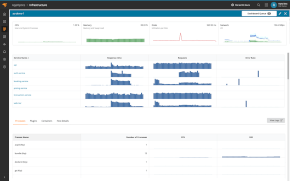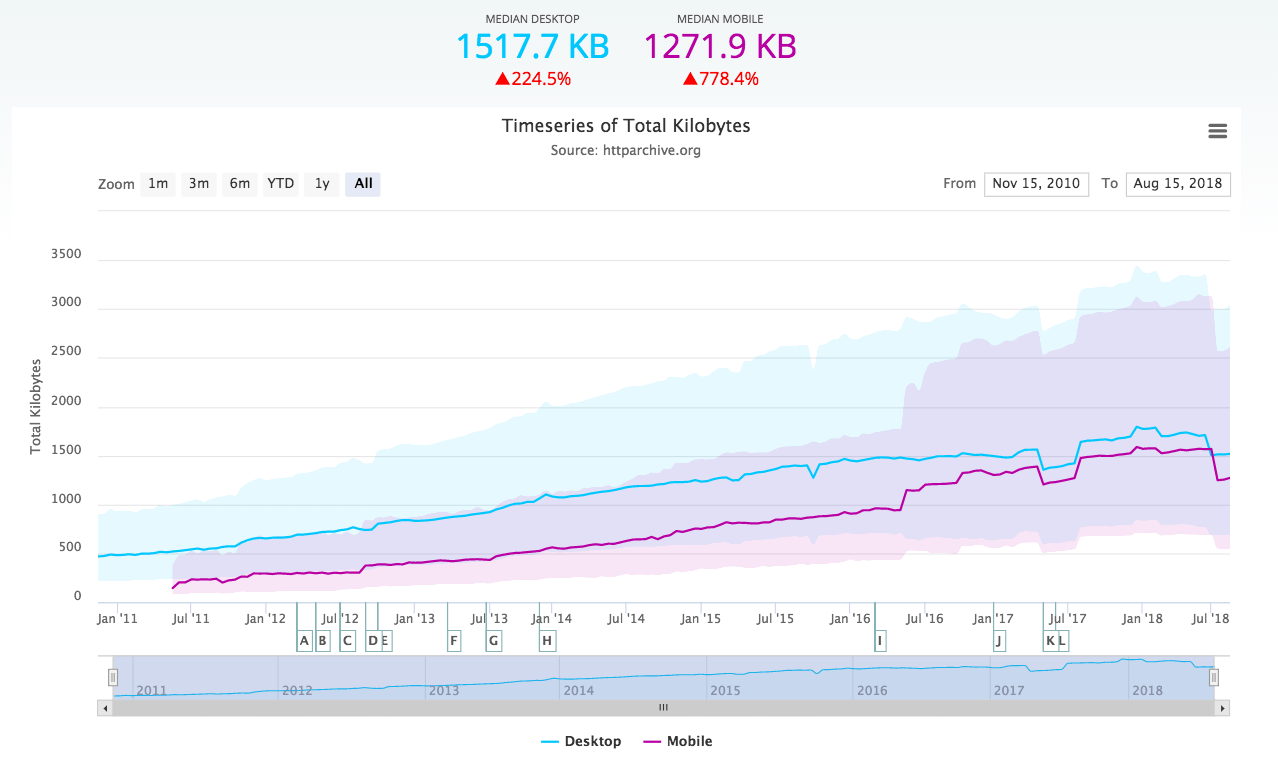Nowadays we are used to having hundreds of gigabytes of storage capacity in our computers. This was pure science fiction only a few decades ago. For example, the first hard disk drive to have gigabyte capacity was as big as a refrigerator, and that was in 1980. Not so long ago!
Pingdom stores a lot of monitoring data every single day, and considering how much we take today’s storage capacity for granted, it’s interesting to look back and put things into perspective. Here is a look back at some interesting storage devices from the early computer era.
The Selectron Tube
The Selectron tube had a capacity of 256 to 4096 bits (32 to 512 bytes). The 4096-bit Selectron was 10 inches long and 3 inches wide. Originally developed in 1946, the memory storage device proved expensive and suffered from production problems, so it never became a success.

Above: The 1024-bit Selectron.
Punch Cards
Early computers often used punch cards for input both of programs and data. Punch cards were in common use until the mid-1970s. It should be noted that the use of punch cards predates computers. They were used as early as 1725 in the textile industry (for controlling mechanized textile looms).

Above: Card from a Fortran program: Z(1) = Y + W(1)

Above left: Punch card reader. Above right: Punch card writer.
Punched Tape
Same as with punch cards, punched tape was originally pioneered by the textile industry for use with mechanized looms. For computers, punch tape could be used for data input but also as a medium to output data. Each row on the tape represented one character.

Above: 8-level punch tape (8 holes per row).
Magnetic Drum Memory
Invented all the way back in 1932 (in Austria), it was widely used in the 1950s and 60s as the main working memory of computers. In the mid-1950s, magnetic drum memory had a capacity of around 10 kB.

Above left: The magnetic Drum Memory of the UNIVAC computer. Above right: A 16-inch-long drum from the IBM 650 computer. It had 40 tracks, 10 kB of storage space, and spun at 12,500 revolutions per minute.
The Hard Disk Drive
The first hard disk drive was the IBM Model 350 Disk File that came with the IBM 305 RAMAC computer in 1956. It had 50 24-inch discs with a total storage capacity of 5 million characters (just under 5 MB).

Above: IBM Model 350, the first-ever hard disk drive.
The first hard drive to have more than 1 GB in capacity was the IBM 3380 in 1980 (it could store 2.52 GB). It was the size of a refrigerator, weighed 550 pounds (250 kg), and the price when it was introduced ranged from $81,000 to $142,400.

Above left: A 250 MB hard disk drive from 1979. Above right: The IBM 3380 from 1980, the first gigabyte-capacity hard disk drive.
A hard disk drive called SyQuest was targeted for personal computers, and for many years had no relevant competition in terms of transferring large desktop publisher documents. The first SyQuest SQ306RD introduced in 1983 had endless (at the time) 5MB hard drive for most of the available data types, also audio and video. In 1986, a 44 MB SQ555 and SQ400 were available on the market.

Above: Removable hard disk SyQuest 44 MB.
The Laserdisc
We mention it here mainly because it was the precursor to the CD-ROM and other optical storage solutions. It was mainly used for movies. The first commercially available laserdisc system was available on the market late in 1978 (then called Laser Videodisc and the more funkily branded DiscoVision) and were 11.81 inches (30 cm) in diameter. The discs could have up to 60 minutes of audio/video on each side. The first laserdiscs had entirely analog content. The basic technology behind laserdiscs was invented all the way back in 1958.

Above left: A Laserdisc next to a regular DVD. Above right: Another Laserdisc.
The Floppy Disc
The diskette, or floppy disk (named so because they were flexible), was invented by IBM and in common use from the mid-1970s to the late 1990s. The first floppy disks were 8 inches, and later in came 5.25 and 3.5-inch formats. The first floppy disk, introduced in 1971, had a capacity of 79.7 kB, and was read-only. A read-write version came a year later.

Above left: An 8-inch floppy and floppy drive next to a regular 3.5-inch floppy disk. Above right: The convenience of easily removable storage media.
Magnetic Tape
Magnetic tape was first used for data storage in 1951. The tape device was called UNISERVO and was the main I/O device on the UNIVAC I computer. The effective transfer rate for the UNISERVO was about 7,200 characters per second. The tapes were metal and 1200 feet long (365 meters) and therefore very heavy.

Above left: The row of tape drives for the UNIVAC I computer. Above right: The IBM 3410 Magnetic Tape Subsystem, introduced in 1971.
And of course, we can’t mention magnetic tape without also mentioning the standard compact cassette, which was a popular way of data storage for personal computers in the late 70s and 80s. Typical data rates for compact cassettes were 2,000 bit/s. You could store about 660 kB per side on a 90-minute tape.

Above left: The standard compact cassette. Above right: The Commodore Datassette is sure to bring up fond memories for people who grew up in the 80s.
DECtape
DECtape was a magnetic data storage introduced in 1963 used mainly with Digital Equipment Corporation computers. It was designed to be durable and reliable enough to act as a computer’s operating system main storage medium. The tape was 0.75 in (19 mm) wide and was accommodating 6 data tracks which were paired with non-adjacent tracks. It could have been written/read in any direction, and it was almost error-proof. The DECtape was used on Digital Equipment’s PDP-series of mainframes and minicomputers, and each tape could store 184K 12-bit PDP-8 words or 144K 18-bit words.

Above left: Dual DECtape unit for a DEC PDP-11. Above right: DECtape removable magnetic media.
There are so many interesting pictures from “the good old days” when you look around on the web. These were some of the best we could find, and we hope you liked them.
If you are interested in the history of computer science, you should check our Gallery of Early Computers and old tech reviews from BYTE Magazine.
Picture sources:
The Selectron. The punch card. The punch card reader and writer. Punched tape 1 and 2. UNIVAC magnetic drum. IBM 650 computer magnetic drum. The IBM Model 350 Disk File. 250 MB hard drisk drive from 1979. The IBM 3380. Laserdisc vs DVD. Held Laserdisc. 8-inch floppy drive. 8-inch floppy in use. UNISERVO and UNIVAC I. The IBM 3410. The compact cassette. The Datassette, SyQuest, TU56DECtape, DECtape I and II.
And as always, Wikipedia was a great source for checking out the actual facts.
EDIT: We removed the comment about the Commodore Datassette sound, since it was a factual error. We also removed this: “(For those who weren’t there, you could hear the sound of the data being read as a high-pitched, screechy sound while you were loading your programs.)” We also went with some of the comment suggestions and decided to add paragraphs regarding the SyQuest and DECtape.
WANT MORE?
Can’t get enough of nostalgia? Don’t miss: The history of PC hardware, in pictures.























